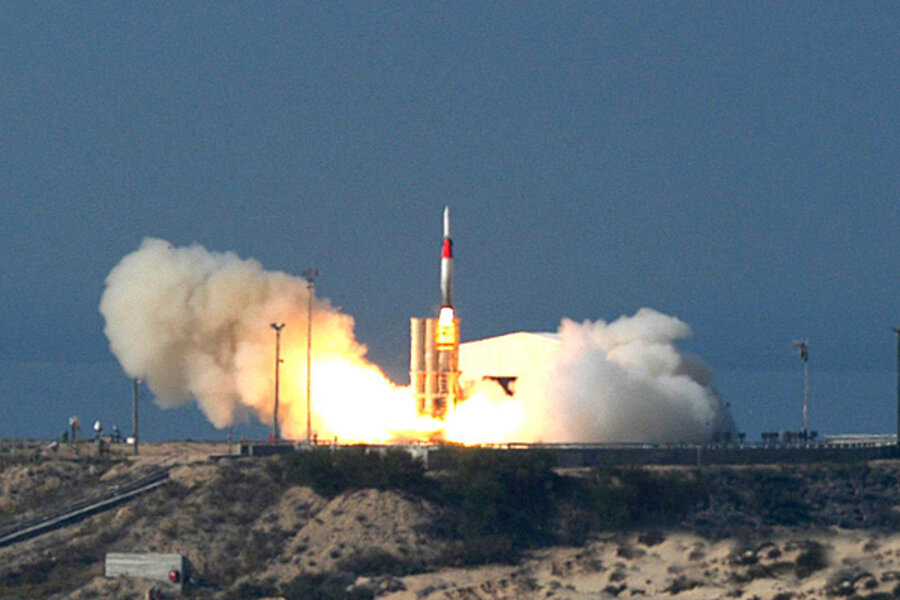Missile test boosts oil prices. Would US tap emergency oil supply?
Loading...
A joint US-Israeli missile test gave energy markets a jolt Tuesday, sending up oil prices on concerns an attack on Syria would disrupt oil production in the region. That would almost certainly send oil prices rocketing higher and threaten a global economy that is emerging in fits and starts from the Great Recession.
But if a major disruption were to occur, the United States has an ace up its sleeve: hundreds of millions of barrels of federally-owned oil stored in massive underground salt caverns along the coastline of the Gulf of Mexico.
Three times in the past four decades, the US has made emergency releases from the Strategic Petroleum Reserve (SPR) to slow a rise in oil prices. And it would do so again.
So far, oil prices haven't reached a trigger point, analysts say, but they're getting closer.
Brent crude prices were up $1.43 to $115.76 a barrel in midday trading Tuesday, after reaching as high as $115.95. US crude oil prices were up 96 cents to $108.61.
Those prices are creeping into the range many analysts predict would cause the US to consider tapping the SPR.
"There are arguments as to whether recession would be inspired at $115-$120 [per barrel (bbl) of oil] or if the world could make do with $140 bbl," Tom Kloza, chief oil analyst for GasBuddy.com, a website that tracks retail gasoline prices, wrote in an e-mail Friday. "My sense is that coordinated action would take place in the middle of those two levels."
Syria, by itself, doesn't threaten oil markets.
"Syria is a very small player in the oil markets," Andrew Lipow, president of Lipow Oil Associates in Houston, said in a telephone interview Friday. "The anxiety in the markets is whether there’d be a retaliatory strike by Syria on oil facilities somewhere in the Middle East or Turkey."
Such a spread of the conflict could rattle oil markets, send energy prices soaring, and threaten the fragile economic recovery.
"The [International Energy Agency] is obviously concerned about the harmful effects of high oil prices on the global economic recovery," Greg Frost, a spokesman for the International Energy Agency (IEA), wrote in an e-mailed statement Friday. "Prices at these levels cause hardship both in IEA countries and especially in emerging economies. Despite the recent increase in oil prices, however, the global oil market is still adequately supplied."
The last time the government released oil from the reserve was in June 2011 during the US military intervention in Libya. Repeated disruptions in Libya's oil output prevented an estimated 132 million barrels of oil from reaching the market. Brent crude oil prices averaged above $123 a barrel in April 2011 and retail gas prices were as high as $3.98 a gallon.
In response, the US released 30 million barrels of oil as part of an IEA-coordinated global release of 60 million barrels into the world market. The price of oil dropped steeply on the announcement, falling more than $5 a barrel to about $90 a barrel on the New York Mercantile Exchange.
The two other instances of strategic releases were in 1991, during Desert Storm, and 2005, in the wake of hurricane Katrina.
"While the IEA, as always, stands ready to respond in the event of a major supply disruption, the current situation does not call for an IEA response," Mr. Frost wrote Friday.
The US currently holds 695.9 million bbl of crude in its Strategic Petroleum Reserve at a cost of $25.7 billion.








